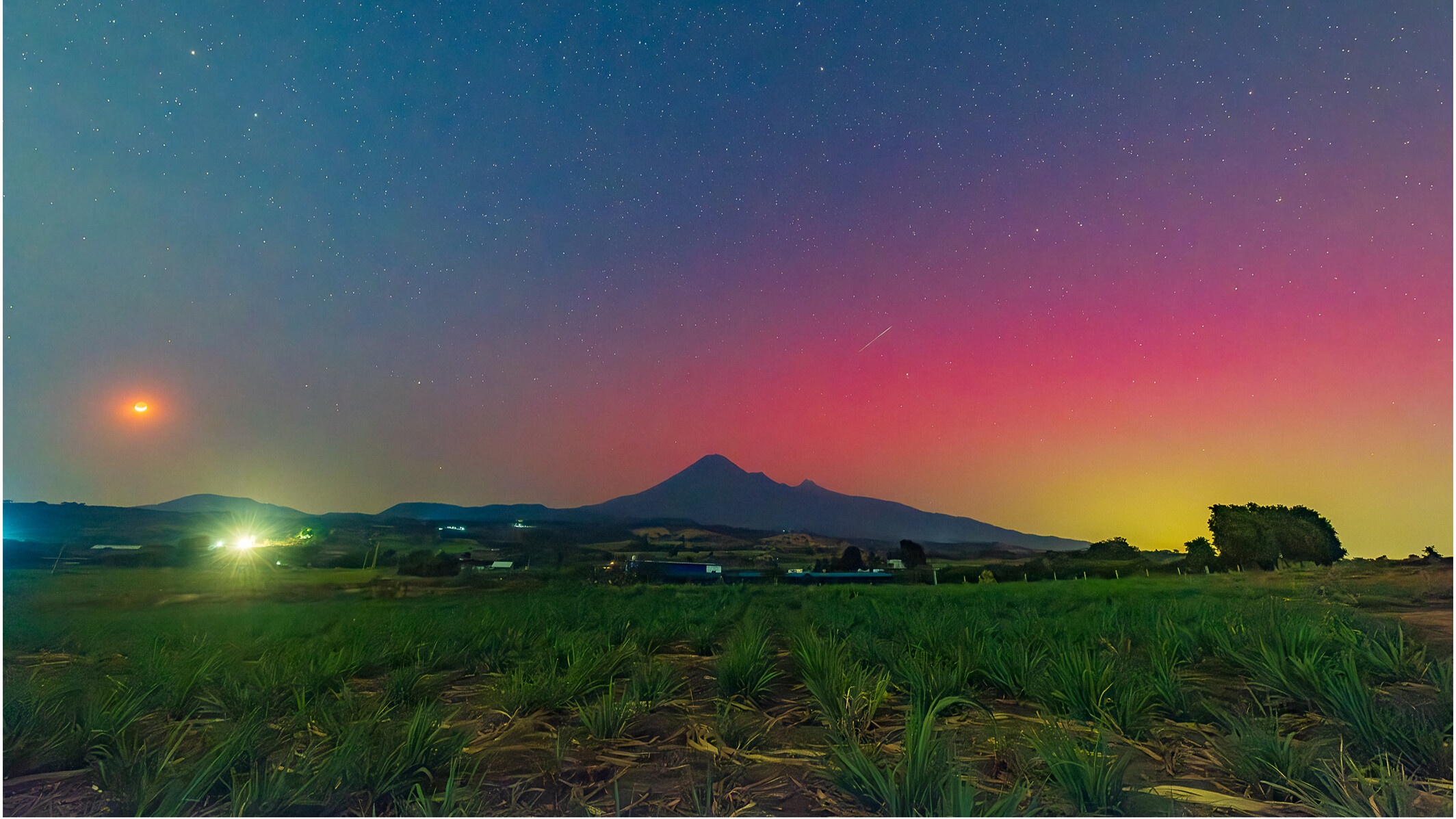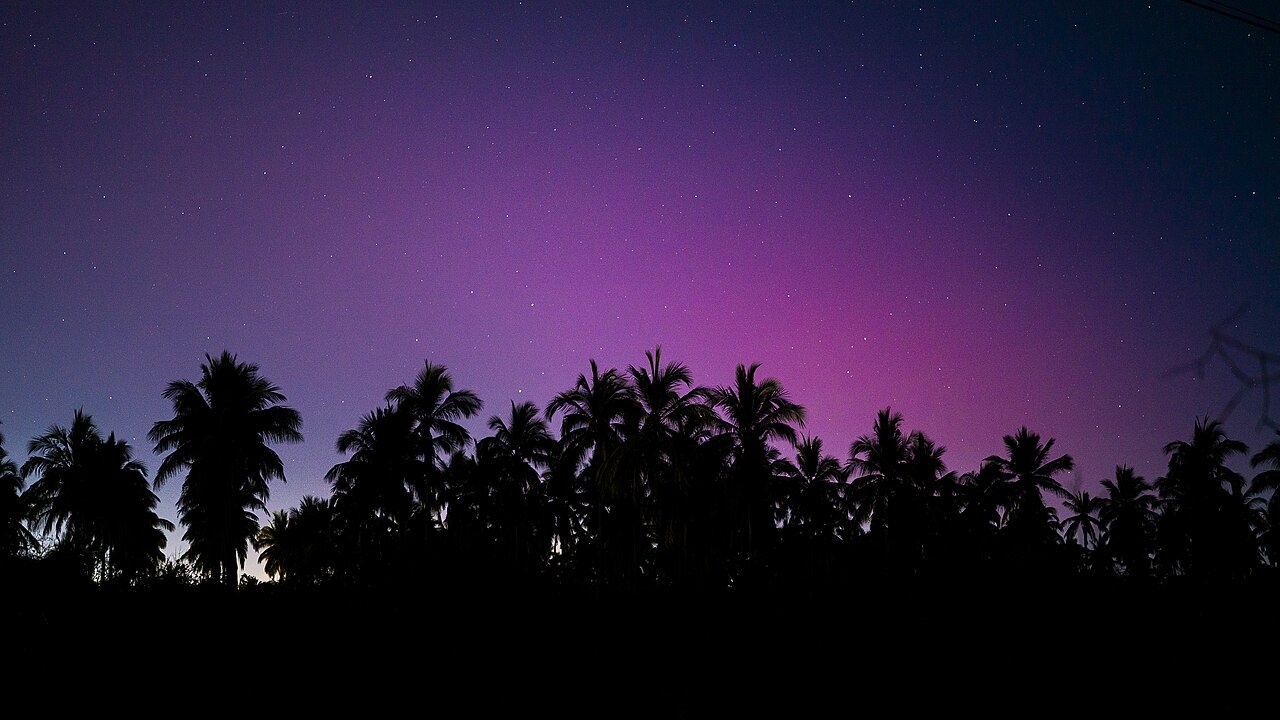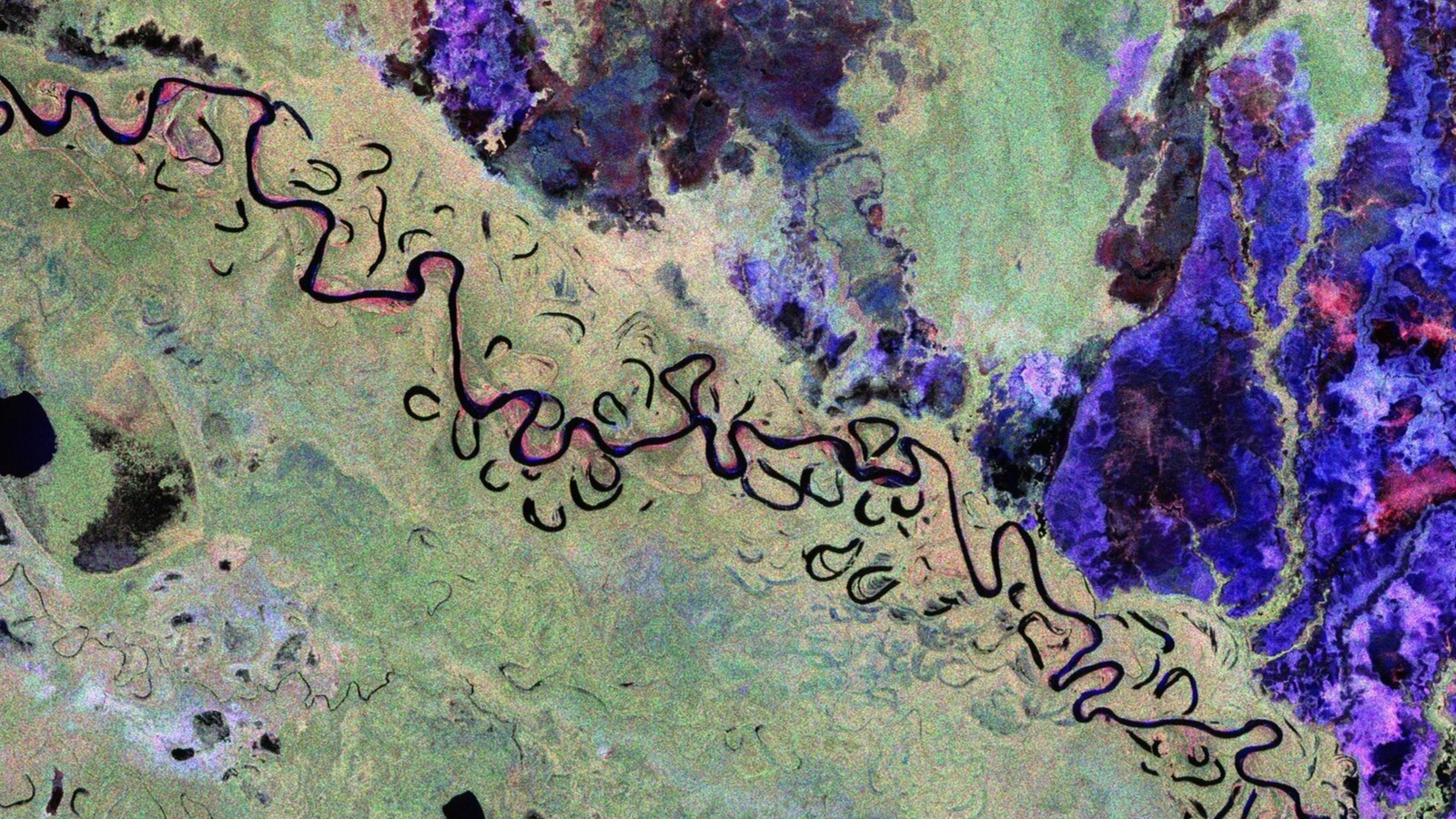
On the morning of May 10 in Mexico, it's not uncommon to overhear the sound of children waking up and serenading the household. The crooning is a classic tradition for Mother's Day, or El Día de La Madre as it's called in Spanish. However, on May 10, 2024, singing wouldn't have been the only thing permeating through Mexican communities in the early hours of the morning.
That day, Mexico was hit by its most powerful geomagnetic storm in more than two decades — marking the first time gleaming auroras were observed in the country since the year 1989. This storm was so powerful it could actually be seen in countries as far away from the ice caps as you can get, including Italy and south of the U.K. The event was indeed the talk of the town. Auroras usually make up either the Northern Lights or the Southern Lights, but they certainly aren't expected to occur smack in the middle.
Geomagnetic storms that produce these lights are the result of massive eruptions from the sun's surface, and are most pronounced at the polar regions of our planet because that's where the Earth’s magnetic field is weakest. They therefore aren't often as visible at low-latitude countries like Mexico. It's important to track these storms because, yes they make for great photo opportunities, but they also can be threatening if severe. For instance, they could threaten the power grid, satellite communication systems and astronauts in space. Powerful auroras reaching Mexico could therefore suggest countries closer to the equator are more at risk from solar storms than first thought.
What causes auroras?
Coronal mass ejections — fiery busts of plasma from the sun's corona — can cause space weather conditions that threaten our planet in a few different ways. These ejections refer to plasma erupting from the sun's surface, which can force particles from the sun and surrounding space to collide with particles in the Earth's atmosphere. Those solar particles can reach speeds pushing 45 million miles per hour (72 million kilometers per hour). Upon reaching our planet's atmosphere, these collisions sometimes generate the beautiful vistas we call auroras — but they can also risk things like the power grid. Altogether, these disturbances are collectively termed "geomagnetic storms."
The recent geomagnetic storm that surprised scientists impacted Mexico for over 40 hours and caused auroras at the expected place: the polar ice caps, shooting blue, red and yellow hues across the North American sky. However, this storm was unique in that it caused auroras in unexpected locales as well; people out celebrating Mother's Day in Mexico took photos of the "Northern Lights in Mexico" and uploaded them to social media. Perspectives of the events can be seen from 18 out of the country's 32 states.

The sun is constantly interacting with the gases that surround the Earth's outer layers. Our planet's ionosphere, the third layer that sits between 30 and 600 miles (48 and 966 kilometers) from the ground, is more "active" above Mexico than in other parts of the world, in a sense, because it lies above the lower-latitude region of the planet, where electrons are more densely packed together. Radiation from the sun has sufficient energy to knock electrons from atoms in the ionosphere, which causes them to become positively charged and produce the colorful auroras.
"These particles [from the sun] are travelling … at an immense speed," Lika Guhathakurta, a solar scientist at the Heliophysics Division at NASA Headquarters in Washington, told Space.com. "All these particles go like an envelope around the magnetic sphere, [then they] percolate down into the ionosphere."
Breaking space news, the latest updates on rocket launches, skywatching events and more!
The danger of geomagnetic storms
Satellites work by beaming radio signals through the ionosphere to receivers on the ground. During a geomagnetic storm, the overactive ionosphere bends the radio signals and causes delays, leading computers on Earth to receive corrupted data which can disrupt modern economies that rely on lightning-fast satellite communication to function properly. For just a moment, Mexico's Global Navigation Satellite System plunged out of sync by almost 80 nanoseconds — one billionth-of-a-second disruptions that risk financial markets and GPS navigation.
"This cycle is definitely much more active than the prior two cycles, which is about 32 years," said Guhathakurta. "Our work is becoming more technologically vulnerable. There are a lot more sectors we’re electrifying that we didn’t previously do."
Hoping to document the rare auroras — which actually included reddish, less frequent ones that usually only happen at higher altitudes — researchers asked citizen scientists to photograph what they saw. Some scientists are using these photos as part of an effort to create a timeline of geomagnetic storms stretching back into the 1700s, which they hope can be used to better understand the history of our sun and its impacts on the Earth.
An aurora borealis at Mexican latitudes as south as Yucatán is not something I thought was even possible until Friday night.Yet here we are.These photos were taken on Sinaloa, Mexico, on May 10th, 2024 (24°N) pic.twitter.com/RK5GZcEHGiMay 13, 2024
At the same time, the Mexico Space Weather Service (SCIESMEX) and the National Space Weather Laboratory (LANCE) measured the solar storm, documenting its activity and publishing their research in the journal Space Weather. They presented their findings at the American Geophysical Union's 2024 annual conference.
"Thanks to our data we were able to observe the level of impact on the ionosphere," Elsa Sanchez-Garcia, professor at the National Autonomous University of Mexico and researcher at LANCE, told Space.com via email (translated from Spanish). "If there is a more intense event or one of equal magnitude to the event of May 10, we can infer the level of impact it will have on our country."
Lying low
Coronal mass ejections can rattle Earth's magnetic field and produce geomagnetically induced currents (GICs). If human power grids are not built to account for electrical surges, GICs can overload them.
The Earth's crust already produces a weak electrical charge which ramps up during a solar storm. Space weather monitors showed that the May 2024 storms electrified rocks and soil in the U.S. When solar wind hits the Earth’s magnetosphere — a bubble-like magnetic field generated by the Earth’s molten core that sits above the ionosphere — the oscillations generate GICs that can run through railroad tracks, underground pipes and into power grids, risking blackouts.
LANCE placed GIC monitors around transformers to see if the storm could tip Mexico into a blackout, but the institute reported that the country's national grid held up. The study's authors said the fact that the lights stayed on was a "testament to the resilience of the current infrastructure" in Mexico.
However, other low-latitude countries might not be so well prepared.
Although the Comision Federal de Electricidad (CFE), the national electrical utility in Mexico, was safe this time, scientists warn that geomagnetic storms could become more common as the sun reaches the peak of the solar cycle, called the solar maximum, a prolonged period of heightened solar activity. The Great Quebec Blackout of 1989 was caused by a similar solar storm, and more could be on the way.
"Previously, auroras were only seen with the naked eye in a sky without light pollution and when the event was really extreme," said Sanchez-Garcia. "Nowadays, cameras and/or phones are so well developed that it is possible to observe an aurora at low latitudes using a long exposure shot."
The last time solar activity was so visible across the world was during the year 2003, when the digital era had not advanced sufficiently to allow high-quality photos of auroras and social media was not widespread enough to allow the photos to be shared far and wide — so while recency bias makes it seem as though the Northern Lights are moving south for the first time, we’re experiencing something that has happened before, albeit mostly without photo documentation. The question is to what extent national grids and our new digital infrastructure can cope with the sun's twists and turns.
"These storms can happen at any time during the solar maximum, the only thing [we’re noticing now] is the frequency," added Guhathakurta.
The "Gannon Storm," as this powerful has come to be known, was named after scientist Jennifer Lea Gannon, a member of the NASA space weather team and colleague of Guhathakurta who passed away at the age of 45.
Carrying on NASA's work, researchers in Mexico are working on the ground with citizen scientists to try to predict when the next large geomagnetic storm will be. The Northern Lights in Mexico that trended on social media were technically harmless — but if an even more powerful storm strikes, pictures of the mesmerizing aurora may struggle to make it to the internet. The dwindling battery life of cellphones could force the event to stay in memory as residents — still singing the songs on Mother's Day — wait for the power to return.
Join our Space Forums to keep talking space on the latest missions, night sky and more! And if you have a news tip, correction or comment, let us know at: community@space.com.
Tom Brown is a freelance science writer living in New York whose work has appeared in the Guardian and Al Jazeera. He is the recipient of the Covering Climate Now Award, the AGU Data Visualization Award and the Silver Fetisov Journalism Award for Excellence in Environmental Journalism. He graduated from the University of East Anglia's Creative Writing and English Literature course and published his debut science-fiction short story collection The Oblivious Pool with Austin Macauley Publishers in 2022.
You must confirm your public display name before commenting
Please logout and then login again, you will then be prompted to enter your display name.

